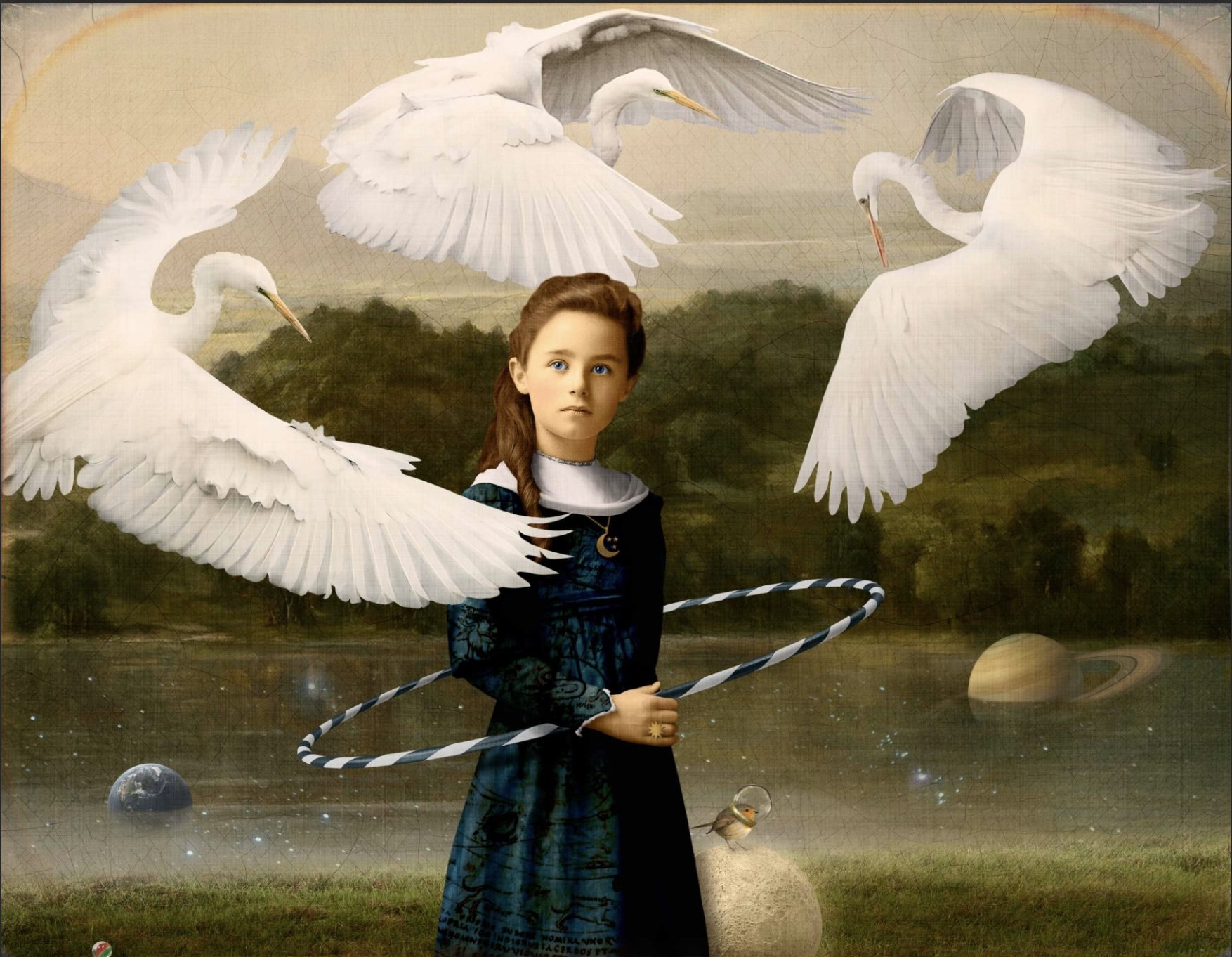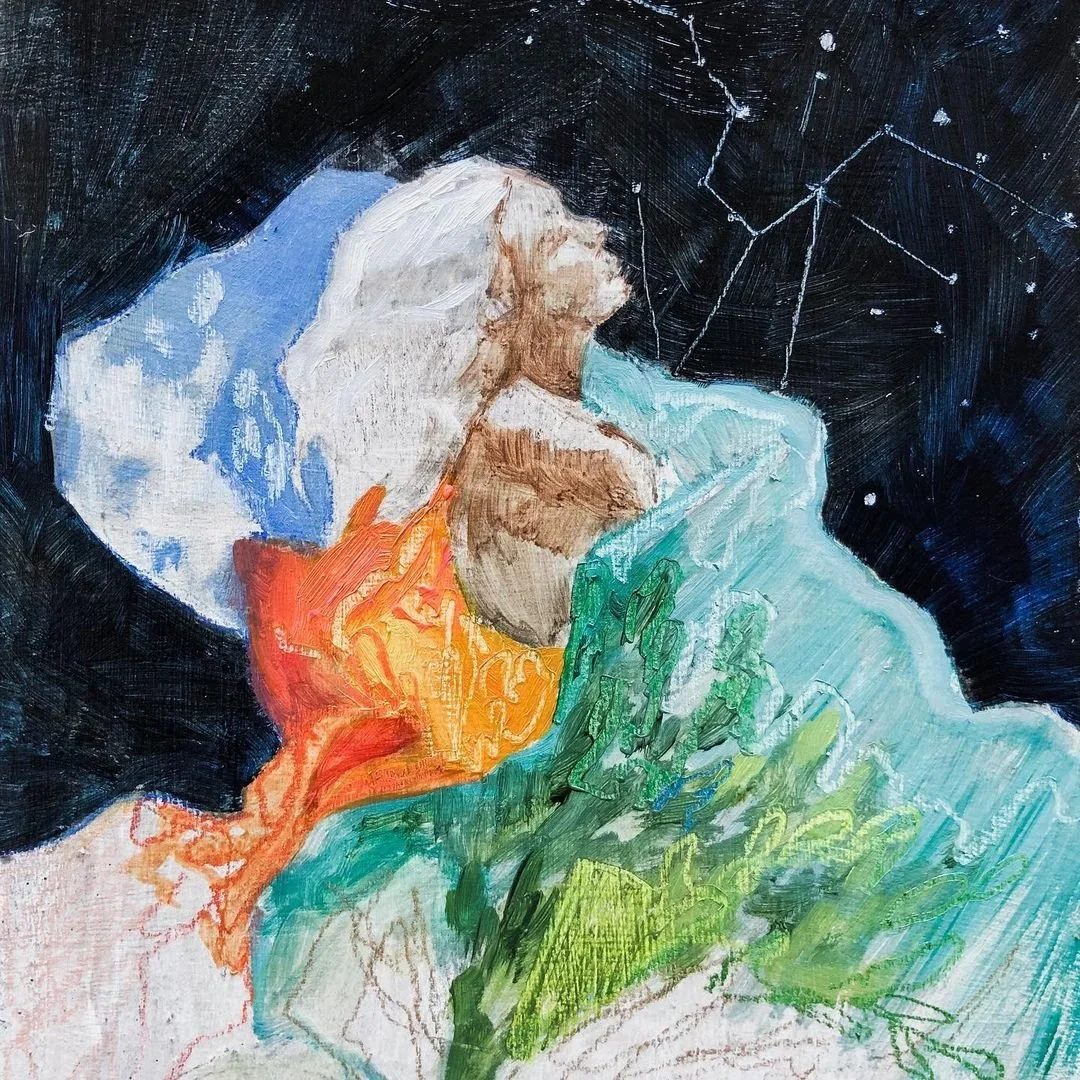What We Saw: The Investigator, The Observer, and the LDS Instinct to Journal
When Glen Nelson reached out to father-daughter duo Zoë Petersen and Todd Peterson about a new project, Zoë did something instinctive and opened her sketchbook. As a full-time artist and illustrator, she occasionally documents her days with drawings. Her illustrated journal entry of that very day shows two figures in a Zoom meeting, dreaming up a creative collaboration. It’s a charming, almost offhand drawing (you can recognize the two artists by Zoë’s round glasses and Todd’s scruffy beard), but it quietly captures something much bigger.
While Zoë’s entry described the opportunity then as “very cool,” she may not have realized at the time the true depth of the creative journey ahead of them. Now, she feels lucky to have captured the moment that sparked the beginning of the new artist’s book The Investigator / The Observer.
This drawn journal entry ends up perfectly mirroring the spirit of the finished project: tender, spare, immediate.
The Story
The Investigator / The Observer is a dual-narrative work of fiction published by the Center for Latter-day Saint Arts for its recent series UP(scale). The two stories exist in the same post-apocalyptic world after a devastating disaster, each told through journal entries written on scraps of salvaged paper, memo pads, sketchbooks, and bits of ephemera. One is written by a lone man surviving in the aftermath. The other, by a pregnant woman making her way back east as the modern world shuts down, writing and painting for the child she carries. Both seem to be desperately attempting to document their experience for an unknown future.
The work was originally produced as a meticulously crafted collector’s edition by the artists, who spent hours perfecting both the materials and printing methods to create the immersive pages that mimic notebook pages, peach can labels, and backs of school permission slips. It’s also now available in a high-quality paperback that contains detailed scans of each crafted page.
Zoë cuts notebook covers. While they seem like a souvenir notebook from “Phantom Ranch”, the cover is of Zoë’s own design.
Inside each notebook cover are trompe l'oeil pages the contain the story of The Observer.
The Instinct To Journal
The voices of these fictional characters and Zoë’s drawing both have something else in common: they exhibit a deeply Latter-day Saint impulse to document. They make meaning through observation and record-keeping. They preserve what happened and what mattered in their world—not because anyone asked them to, but because something in them compelled it.
While it can feel instinctive, this behavior has long been encouraged in Latter-day Saint tradition. Prophets have long urged members to keep journals—to record their daily lives, spiritual impressions, and family history. The directive to keep good records is echoed in both The Book of Mormon and Doctrine & Covenants.
In The Investigator, Todd Petersen’s narrator forages through abandoned homes, many of them belonging to Latter-day Saints, sustained not only by canned peaches and stored rice but also by the remnants of others’ lives. He writes his own entries on whatever paper he can find, shaping a record without necessarily naming it as such. In The Observer, Zoë and Todd collaborated together to shape the story, using illustrations and the character’s voice bring the second story to life: a woman traveling alone, watercoloring her way through empty towns as she pieces together what happened. Her entries—some drawn, some painted—are meant for a baby she hasn’t yet met, a child who may one day read and understand what they survived together.
The form of these stories is what gives them their emotional weight. You’re not reading fiction in the traditional sense—you’re reading someone’s journal. Someone’s honest, fragmented, and intimate account of what it was like to keep press forward, to keep moving. To endure. In Zoe’s illustrations, you see remnants of daily life impacted by disaster. In Todd’s prose, you watch the characters’ resilience wax and wane in their unknown circumstances, and what ultimately drives them to survive.
The limited collector’s edition is a remarkable object, designed to reflect the patchwork nature of the stories themselves—handcrafted, textured, visually rich. But the newly released paperback makes this one-of-a-kind reading experience widely accessible. We hope readers will pick up this edition and explore its inventive storytelling.
And perhaps even more: we hope it inspires you to pick up a pen, to draw in the margins, to keep your own record of what matters. As these characters remind us—whether the world is ending or just quietly turning—it’s worth writing down what you see.
Buy the paperback: Now available on Amazon
Explore the book: Learn more and see images from the collector's edition












